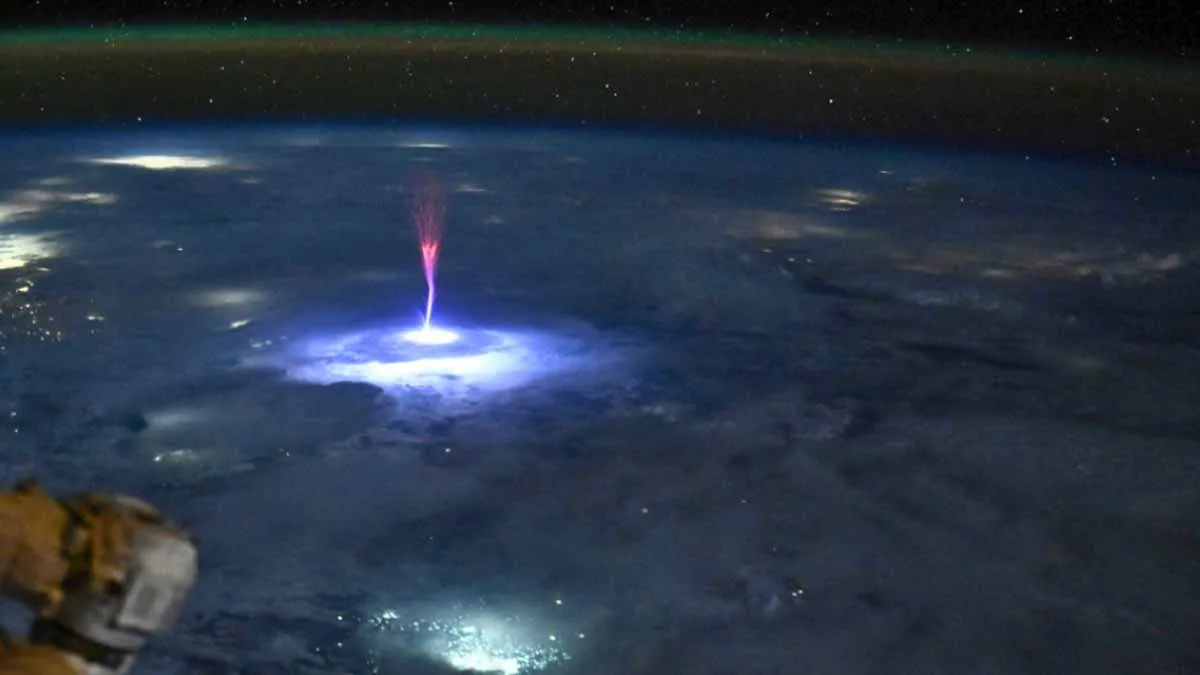Breathtaking Space Images Reveal Lightning’s Hidden Secrets

High above Earth, where our atmosphere blends into the vastness of space, astronauts on the International Space Station (ISS) catch eye-popping natural light shows that most of us never get to see. These electric displays not only spark our wonder but also shake up our understanding of how our skies work and affect things like radio communications and flight safety.
Astronauts’ One-of-A-Kind Look at Lightning
From their perch on the ISS, astronauts enjoy a front-row seat to rare lightning events happening way above storm clouds. These brief bursts of light can really change the look of the upper atmosphere. Pictures from NASA give us a peek at these quick-fire displays, showing off visuals that are both dazzling and packed with scientific info.
These bright events come in all shapes and sizes, occurring as high as 55 miles above raging cumulonimbus clouds. You’ve got the:
- red sprites that kind of remind you of jellyfish with their dangling tendrils,
- blue jets that blast upward into the stratosphere,
- and the violet halos along with wide ultraviolet rings that complete this sky-high show.
They happen in a flash, often too quick for ground cameras to catch—making NASA’s snap shots a real game changer for study.
How Storms Mess With Our Skies and Signals
These high-up electric bursts stir things up in the charged layers of our atmosphere. Among them are ELVES, huge ultraviolet rings that can stretch for hundreds of miles and tweak the electric balance way up high. This can make long-range radio signals flicker, which isn’t exactly a win for pilots and communication crews.
Plus, the corona discharges linked with these events mix around nitrogen oxides. That mix then affects ozone levels and the way heat is spread around our skies. Understanding these happenings is key to getting a better read on weather and keeping our communication systems humming.
ASIM on the ISS: Watching Storms Up Close
Since 2018, the European Space Agency’s ASIM (Atmosphere-Space Interactions Monitor) has been busy keeping an eye on storms from its spot on the ISS. Armed with super-fast cameras and photometers, ASIM picks up even the tiniest flickers of light, digging into how storm cloud tops get ready for lightning strikes. This gear has shown that discharges at the very top of the clouds can send a serious jolt into our upper atmosphere, opening up new insights into how storms roll.
Astronauts pitch in big time with steady views from the ISS cupola. The Thor-Davis experiment, for instance, uses a camera that can record storms at a staggering 100,000 frames per second. All this data not only backs up lab tests on plasma but also reveals patterns in storm behavior we hadn’t seen before.
Terrestrial Gamma-Ray Flashes: Exploring a New Side of Lightning
Lightning isn’t just about bright flashes—it can also kick off terrestrial gamma-ray flashes, which are intense bursts releasing energy similar to a chest X-ray shot. To chart these flashes over storm belts near the equator, Japan’s space agency teamed up with others to send Light-1 to the ISS. This project tracks gamma-ray bursts, adding another layer to our picture of storm-driven radiation.
What It Means for Flying and What’s Next
The data from instruments like ASIM and Light-1 is helping improve how we steer planes around cloud-top electric fields. New algorithms based on this research are even being used to help avoid power failures by recognizing the signals of these brief events. Plus, satellite feeds are getting us better at predicting shifts in temperature and fine-tuning the storm models we use.
Looking forward, engineers are working on faster detectors that can scan multiple wavelengths at once. Soon, small satellites will deliver real-time alerts to weather centers, making forecasts of rough weather even sharper. As scientists pile up more storm data from space, they keep discovering new patterns in these fascinating sky shows.
Every new observation from the ISS or projects like ASIM and Light-1 deepens our grasp of how these electric storms work—and helps us better protect our systems and keep our skies running smoothly.